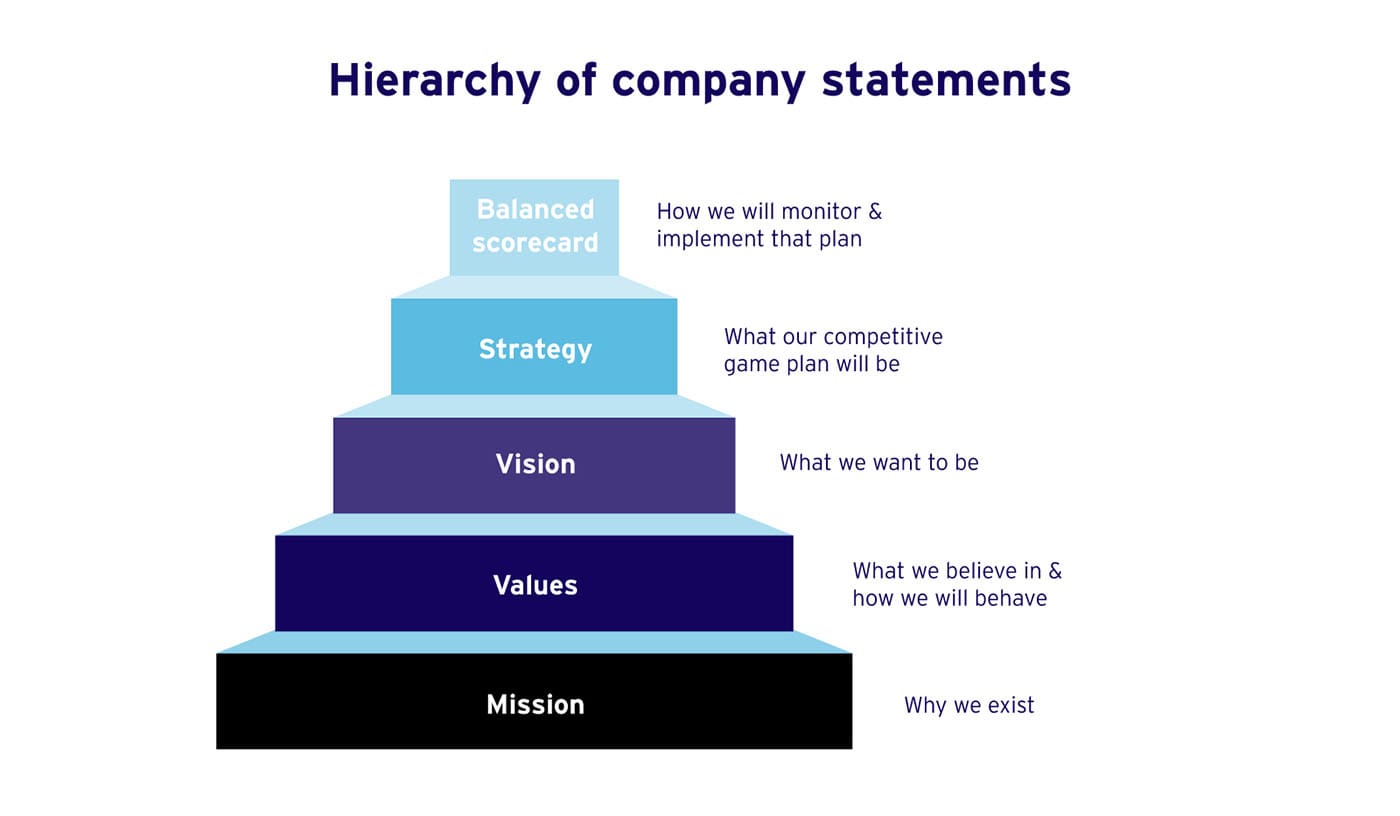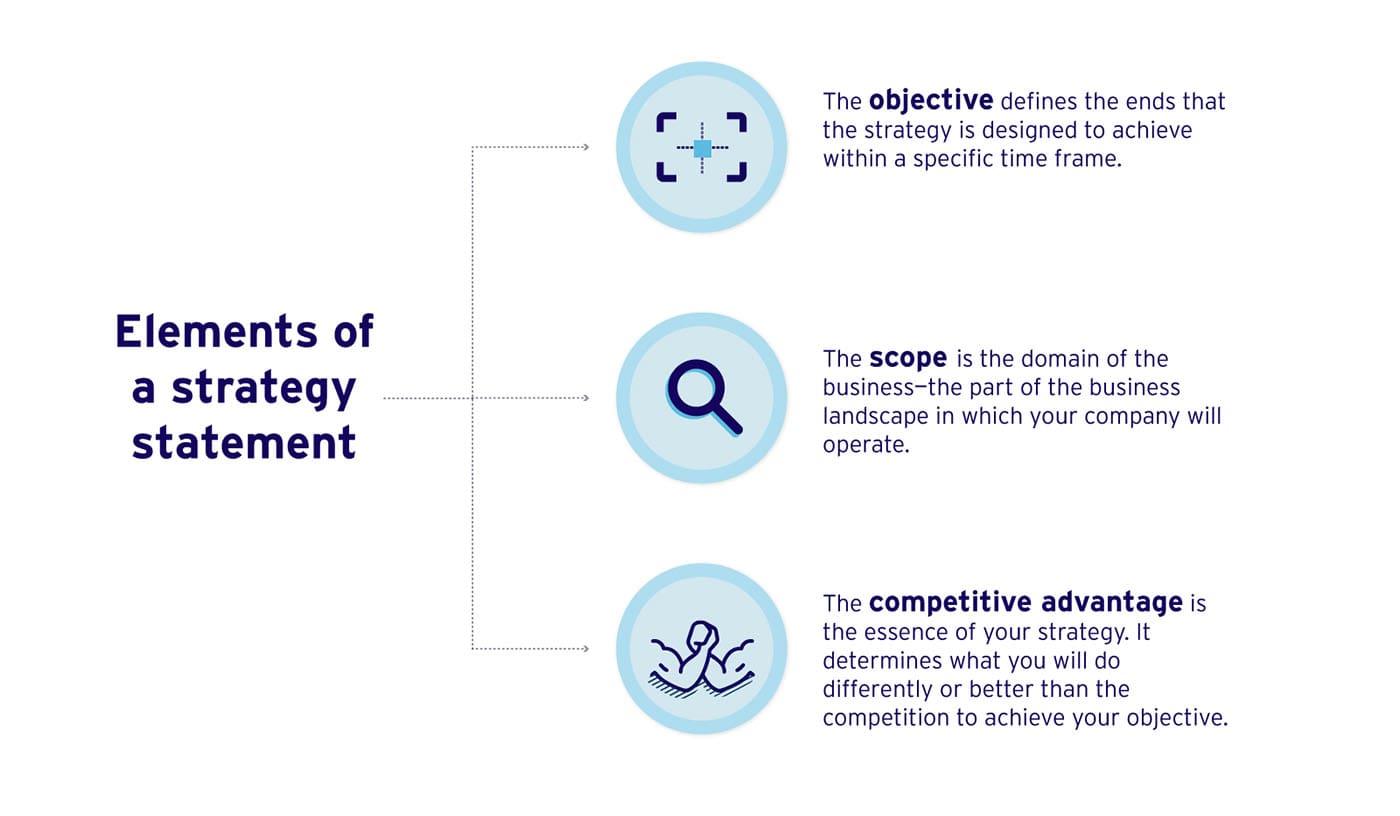
A strategy statement helps ensure employees understand and stay focused on the company’s strategy.
It communicates three key aspects:
A strategy statement communicates your company’s strategy to everyone within your startup. The statement consists of three components: objective, scope and competitive advantage. All three components must be expressed as clearly as possible.
A well-written strategy statement will help employees and the organization to understand their roles when executing the company’s strategy. Without this understanding, your startup may be pulled in different directions and lose its focus. The purpose of the strategy statement is to ensure that employees have a clear understanding of the company’s strategy.
The strategy statement is the fourth level in the hierarchy of company statements. It is more concrete, practical, and unique than the mission statement.


There are three basic elements of a strategy statement: the objective, the scope and the competitive advantage.
Defining the objective, scope and competitive advantage requires trade-offs, which are fundamental to strategy. For example, if a company decides to pursue growth, it must accept that profitability will not be a priority. If it decides to serve institutional clients, it may ignore retail customers.
The strategic objective is the single, specific objective that will drive the business over the next few years. It is based on the maxim, “If you don’t know where you are going, any road will get you there.” It is not to be confused with the company’s mission, vision or values, which are not useful as strategic goals. The objective must be specific, measurable and time bound. It must also be a single goal (that is, growth or profitability), although subordinate goals may follow from the strategic objective.
Maximizing shareholder value is one strategic objective. However, many strategies are designed to achieve this goal. When creating a strategy statement, you must answer the question: Which objective is most likely to maximize shareholder value over the next few years?
For early-stage startups, the objectives relating to your market strategy depend on the type of market you plan to enter.
If you enter an existing market, your aim for the first year will be to maximize the market share that you capture from the competition. To measure that objective, you need to:
If you enter a new market, your first-year objectives will differ. They will not be revenue-oriented. Instead your objectives will focus on:
At the end of the year, ideally you will see evidence of traction around your vision:
The details will depend on the nature of your business, but in general, these types of measures will indicate whether a market exists for you.
The company’s scope encompasses three dimensions—the target customer or offering, geographic location, and vertical integration (that is, whole product). Each dimension may vary in relevance (for example, the customer may be more important than geographic location). Clearly defining the boundaries in each area should make it obvious which activities to concentrate on (and which ones to avoid).
The company’s scope does not determine exactly what should be done within those boundaries, as there is room for experimentation and initiative. However, it should specify where the company or business will not go. This will prevent employees from wasting resources on projects that do not fit the corporate strategy.
The competitive advantage is the most important part of the strategy statement. It describes the logic of why you will succeed, how you differ, or what you are doing better than the competition. To define the competitive advantage:
First, create a great product strategy based on careful evaluation of the industry landscape. Then, develop a strategy statement that captures the strategy’s essence in a way that makes sense to everyone at the company.
The process should involve employees in all parts of the company and at all levels. Work through the wording of the strategy statement in as much detail as possible.
The end result is a brief statement that reflects the three elements of an effective strategy and makes sense to everyone in the company. It may include explanatory notes to clarify issues and implications.
Building your go-to-market strategy for an international market? Sign up to the International Growth Collection to access specialized resources built in partnership with Export Development Canada.